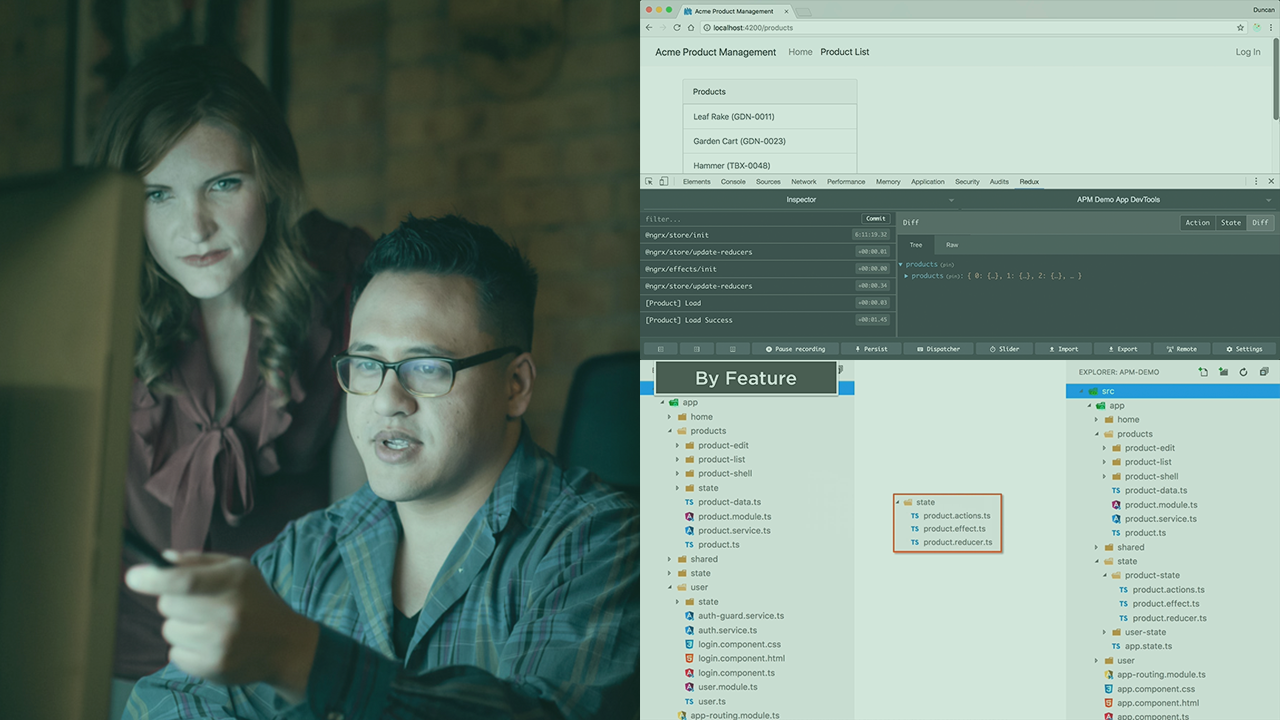- Course
Angular NgRx: Getting Started
NgRx is a powerful library for organizing and managing state and interactions with that state in your Angular applications using the redux pattern. This course gets you started with NgRx including a store, actions, reducers, effects, and selectors.

- Course
Angular NgRx: Getting Started
NgRx is a powerful library for organizing and managing state and interactions with that state in your Angular applications using the redux pattern. This course gets you started with NgRx including a store, actions, reducers, effects, and selectors.
Get started today
Access this course and other top-rated tech content with one of our business plans.
Try this course for free
Access this course and other top-rated tech content with one of our individual plans.
This course is included in the libraries shown below:
- Core Tech
What you'll learn
At the core of state management in Angular is a thorough knowledge of the Redux pattern and the NgRx library. NgRx is a powerful library for organizing and managing state and interactions with the state in your Angular applications following the Redux pattern. In this course, Angular NgRx: Getting Started, you will learn the three principles of the Redux pattern that NgRx follows and the benefits this brings to your Angular applications. First, you will discover how to define a single store for all of your application state, access data from the store with selectors, dispatch actions using action creators, and process those actions with reducers to create new state. Next, you will explore how to handle side effects, such as asynchronous operations, with effects. Finally, you will learn how to architect your Angular applications for scale and performance using the container and presentational component patterns. When you are finished with this course, you will have a foundational knowledge of NgRx that will help you move forward to develop larger or more complex Angular application.

